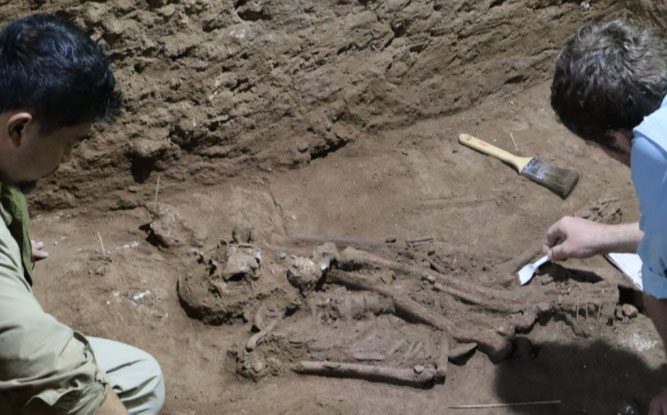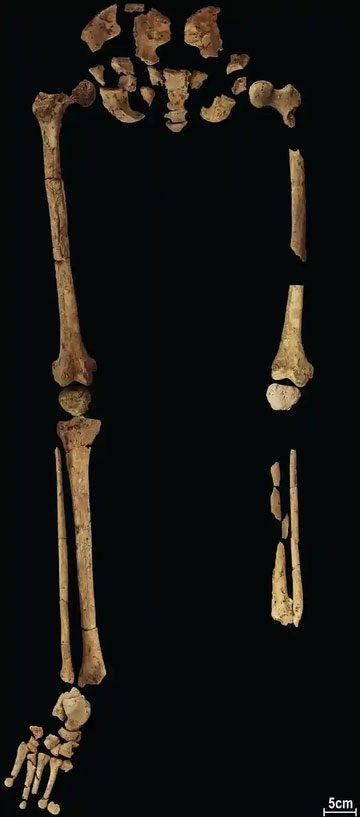Human civilization took a remarkable and mysterious step 31,000 years ago, as evidenced by a skeleton missing part of its left leg discovered in Borneo, Indonesia.
According to Science Alert, the skeleton was found in a limestone cave in a remote area of East Kalimantan, Borneo, Indonesia in 2020. Since then, a research team from various institutions in Indonesia and Australia, led by archaeologist Tim Maloney from Griffith University in Australia, has analyzed the findings and highlighted several unusual aspects.
The absence of part of the left leg may seem ordinary, but what is peculiar is that the foot of this young individual has been remarkably skillfully amputated.

Archaeologists examining the unusual skeleton – (Photo: NATURE).

31,000-year-old skeleton found in a cave in Indonesia. (Photo: Guardian/Tim Maloney).
The mysterious amputation appears to have occurred when the individual was a child, approximately 6-9 years before death. This clearly indicates that the amputation was a medical procedure.
“It is astonishing that this ancient individual survived a very serious and life-threatening childhood surgery. The wound healed, resulting in a well-formed stump. Subsequently, the person lived for many years in a hilly terrain with altered mobility,” said bioarchaeologist Melandri Vlok from the University of Sydney, Australia, regarding the data revealed by the skeleton.
Previously, the earliest evidence of human amputation surgery was a 7,000-year-old male skeleton found in France, which had an amputated left forearm just above the elbow.
The 31,000-year dating of the newly discovered skeleton—determined through radiocarbon isotope analysis—is indeed shocking, not only due to the way the surgery was performed and the healing of the wound but also in understanding that amputation could be a means of saving a life.
Even today, amputation remains a complex surgery requiring a team of specialists in anatomy and circulation to manage blood vessels, nerves, and joints, as well as strict infection control.
Scientists acknowledge that this discovery has overturned the assumption among archaeologists that such complex surgical procedures could not exist in hunter-gatherer societies.
It was previously believed that such medical advancements only began when humanity transitioned to agricultural societies—around 10,000 years ago.
Whether this skeleton reflects an unusually advanced level of medical knowledge specific to a particular community or if it was widespread across many communities remains an open question.
The likelihood that it occurred as a rare and isolated event is still high. Researchers suggest that the conditions in humid tropical regions like Indonesia may have encouraged early hunter-gatherers to seek out natural medicinal resources, which are essential for procedures such as anesthesia and sterilization.
This research has just been published in the scientific journal Nature.





















































